
Kelly Zen-Tie Tsai asks Obama to include the even-less-visible minorities (by which she doesn’t mean the purple, blue, and green):
Via Stuff White People Do, where there is also a nice discussion.

Kelly Zen-Tie Tsai asks Obama to include the even-less-visible minorities (by which she doesn’t mean the purple, blue, and green):
Via Stuff White People Do, where there is also a nice discussion.
Elisabeth R. sent us this one-minute commercial. I’ll let you experience it as designed (it has a surprise ending) and include my comments below:
We might feel that feminism and gun ownership are incompatible. An argument could be made that (especially machine) gun ownership is anti-feminist, but it’s also true that we artificially cluster rather random, unconnected ideas into political ideologies that we then understand to be compatible by definition. For example, what does being anti-gay marriage and anti-taxes have to do with each other? Nothing.
For more on pro-gun propaganda, see this extensive set of really fascinating posters making feminist, anti-racist, and pro-gay arguments in favor of gun ownership.
For another example of an effort to bridge the political binary, see this post on pro-environment/anti-immigrant activism
Franklin S. alerted us to the fact that someone at Complex magazine goofed. Our reward is another peek into the re-touching process that shapes nearly every image in our lives. This time the subject is Kim Kardashian. Animal made the find:
We spotted this image (left)… this morning in their “web exclusive” gallery, but by afternoon she was looking recognizably altered (right) and then removed from the site completely.
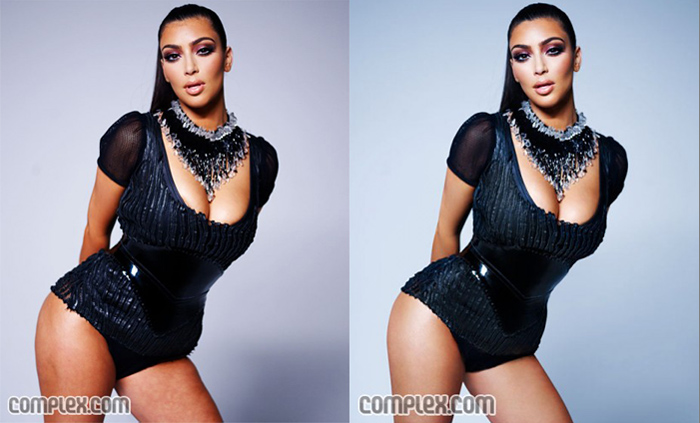
See all of our re-touching posts here.
Lisa Wade, PhD is an Associate Professor at Tulane University. She is the author of American Hookup, a book about college sexual culture; a textbook about gender; and a forthcoming introductory text: Terrible Magnificent Sociology. You can follow her on Twitter and Instagram.
Nate Silver at FiveThirtyEight put up this graph of U.S. household debt (from the 2007 Survey of Consumer Finances):
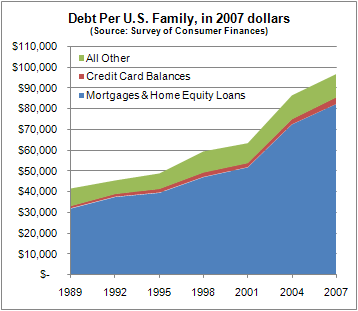
Silver says,
Per-family household debt increased by about 130% in real dollars between 1989 and 2007, from roughly $42,000 per family in 1989 to $97,000 eighteen years later. Most of that increase has come during the past six or seven years — household debt increased by 52% between 2001 and 2007 alone. Almost all of the debt (about 85%) falls into the category that the Fed calls “secured by residential property” — which means mortgages and home-equity loans.
Some other images from the SCF Chartbook (available here)–and pay attention to the y axis, since the scale isn’t the same in all of them:
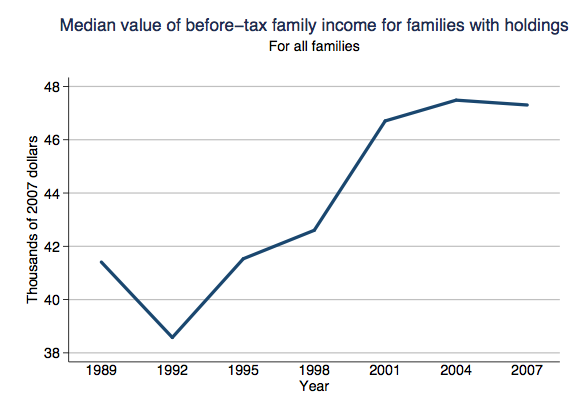
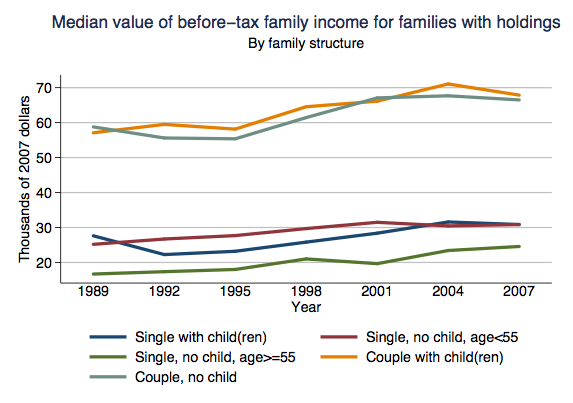
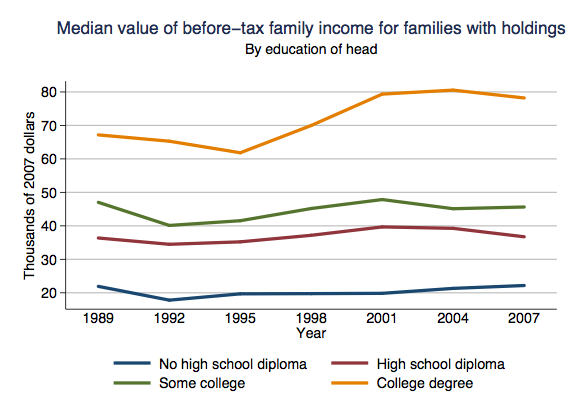
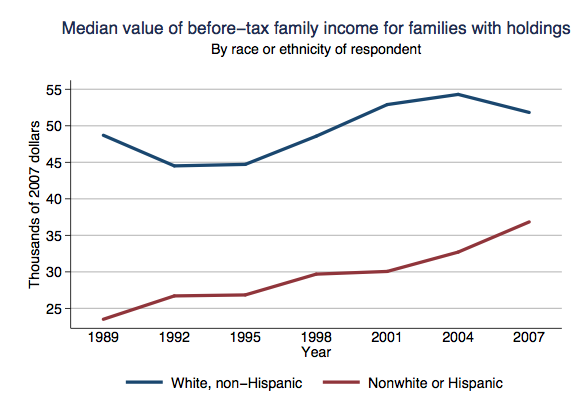
This next one is for rural (non-MSA) and urban (MSA) areas:
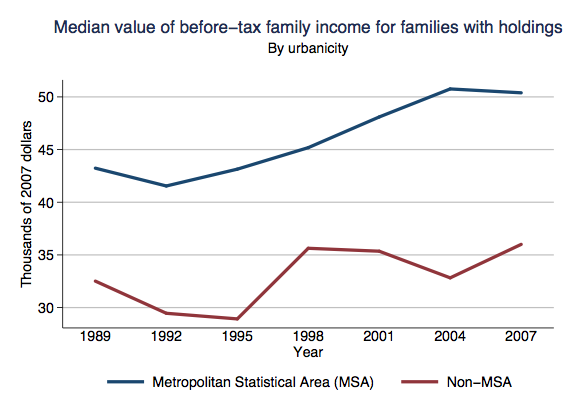
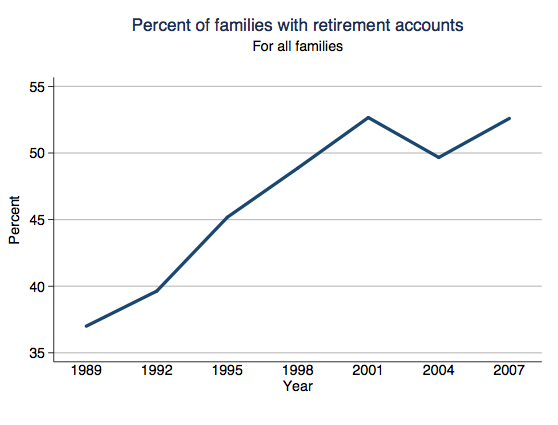
The Chartbook has images of the mean values for all these calculations as well, I just prefer the median to reduce the effects of outlier incomes.
I found the following Web site, PzG, as I was comparison shopping on the Web for a 1:6 action figure that I wanted for customization [to strip of the Nazi associations and use for other, fictional purposes!]. PzG bills itself as “Your Third Reich Nazi Adolf Hitler HQ!” According to its index page, it sells
Distinctive Panzer, Kriegsmarine, Luftwaffe, Waffen SS, and German WWII Nazi resources for hobbyists, teachers,museums and all students of Third Reich history in one convenient location.
As I clicked through the various pages of the site, I quickly realized that it was an Aryan supremacist/Nazi apologist storefront. Interestingly enough, though, PzG knows that its views are objectionable to many and even addresses this on the page selling mousepads.
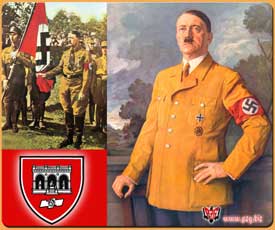
The mousepad page says:
No place to hang your favorite war art or recruitment poster? Wife or roomate [sic] dosn’t [sic] approve of your artwork selections? NOT A PROBLEM ANYMORE! Get your perfect piece of historical nazi artwork in an everyday usable format. Get all your favorite designs and change your mousepads often to keep your workspace an inspiring and motivational headquaters [sic].
Note how the page acknowledges that spouses and housemates probably won’t like pro-Nazi displays in their houses. Nevertheless, the page accentuates the “positive” attributes of Nazi culture and iconography [creating an “inspiring and motivational” work place], but never forgets its militaristic origins [mousepads are used in “headquaters”]. This site especially sparks discussions about the use of language to construct a societally acceptable image for a group that most people would find viscerally objectionable.
Incidentally, on the same site, you can also find the site owners’ discussion of the Mothers’ Cross [medals given to women under the Third Reich who birthed many children]. The historical discussion of these medals shifts almost seamlessly into a glorification of the site owner’s large, expanding family, with photos of wife and children as they grow. Is this family practicing the principles elaborated in our earlier discussion about the Mothers’ Cross medal?
We’re pleased to feature a post by Robert Hariman. Robert is a professor of Rhetoric and Public Culture in the Department of Communication Studies of Northwestern University. Robert blogs at No Caption Needed, where we saw this great post:
—————————
I am suspicious of references to “the Arab Street,” particularly when the phase is applied–as it often is–to nations and other vast swaths of territory that are not Arab or not exclusively Arab. Several years ago Christopher Hitchens declared that it was a vanquished cliche but he was misusing it himself and not surprisingly as he was blowing the war trumpet for the Bush administration. And he wasn’t speaking of its persistence as a visual convention.
The caption of this photograph at The Guardian says only, “Nowruz celebrations in Afghanistan.” Nowruz is the name of the Iranian New Year, which is celebrated in a number of countries by people of several faiths. The baskets of dried fruits eaten during the holiday provide the only visual connection to the colorful festivities, and you have to know more than the paper tells you to see that. For many viewers, this will a thoroughly conventional image of the Middle East.
That image is one of throngs of working class men massed together in the street. What little business is there is in the open air markets lining each side of the densely packed urban space. We see small batches of everyday goods on display–probably to be bartered for, no less. The open baskets of food are a sure marker of the underdeveloped world. (Imagine how many packages it would take to wrap up all that fruit for individual snacks to be sold in the US; and even in Whole Foods the unpackaged food is in closed bins.) Everything fits together into a single narrative, but the masses of men and boys make the scene politically significant. This is the place where collective delusions take hold, where mobs are formed, and where unrest can explode into revolutionary violence and Jihad.
Which is why I get a kick out of this photograph of another Nowruz celebration.
The caption reads, “An Iranian man skewers chicken for grilling as he picnics with his family.” My first thought when I saw the image was to check and make sure it wasn’t taken in Chicago. This also is a very familiar scene: grass, blankets, families and friends, plastic containers of food, dad getting ready to do the grilling.
What is astonishing is that I was able to see them at all. A typical summer holiday photo becomes a radical disruption of Western visual conventions when taken in Iran and shown in the US. Of course, it wasn’t shown in the US: this, too, is from the UK paper.
In this photo, there is no Arab street nor Iranian masses dominated by Mullahs and demagogues. A middle class tableau reveals that so much of what is in fact ordinary life for many people in Iran and elsewhere in the Middle East is never seen in the US. And it isn’t seen because it doesn’t fit into simplistic categories, outdated stereotypes, and a dominant ideology. All that is shown and implied in the cliches is of course also there, but it is there as part of a much more complex and varied social reality.
As evidence of how things might appear a bit different, notice how seeing the second image can affect perception of the first one. In the second, it seems evident that the family is posing for the photograph. They’re doing exactly what they would have been doing but now with the additional, amused awareness that it is, for a moment, also an act. And sure enough, if you look back to the first photo, you can see the same thing. And if you can see that, they no longer need appear as a mass, or poor, or threatening, or anything but people enjoying a holiday. Much like people in the US were doing this past weekend to celebrate St. Patrick’s day, thronged together, in the street.
Photographs by Natalie Behring-Chisholm/Getty Images and Behrouz Mehri/AFP-Getty Images.
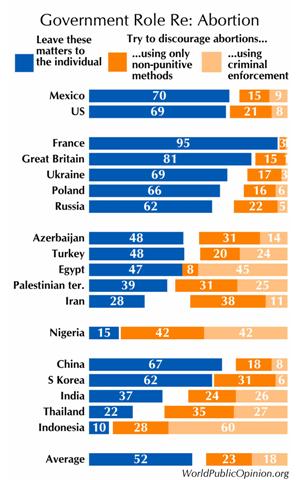
Found here.